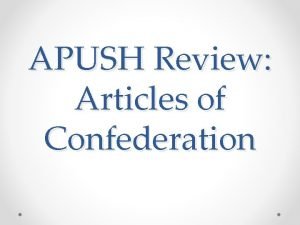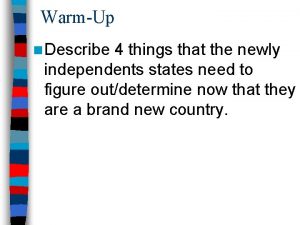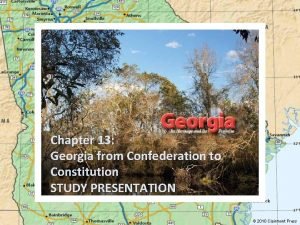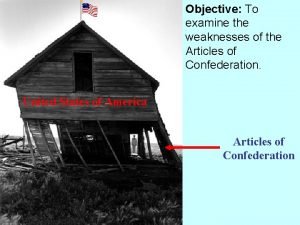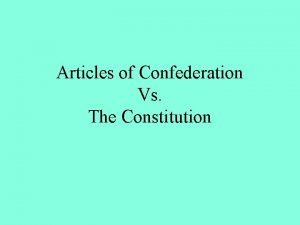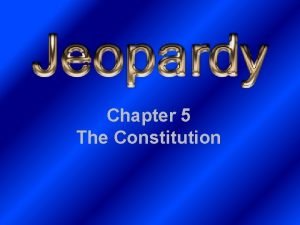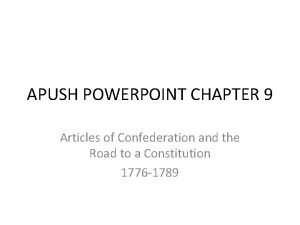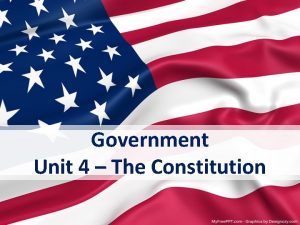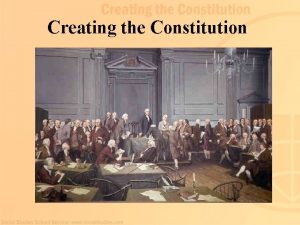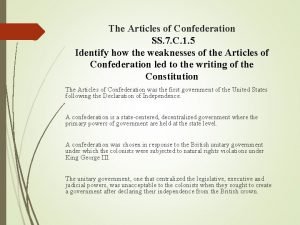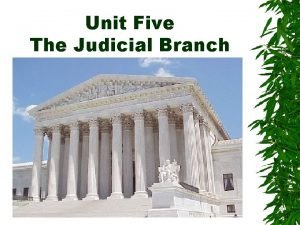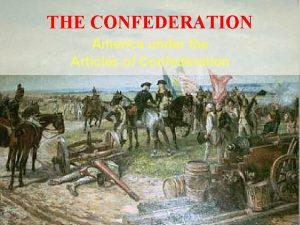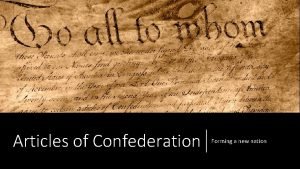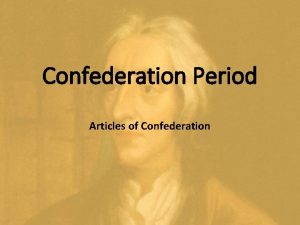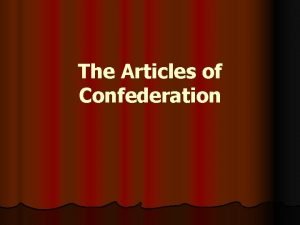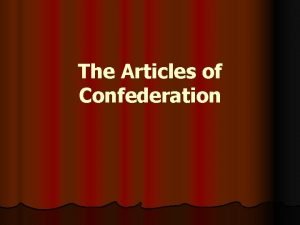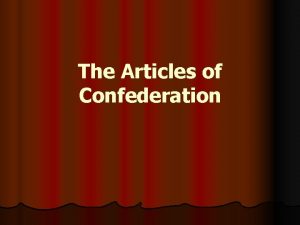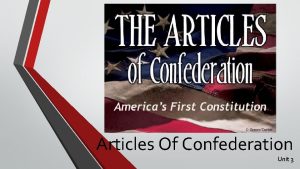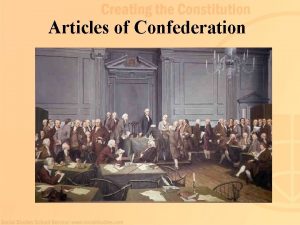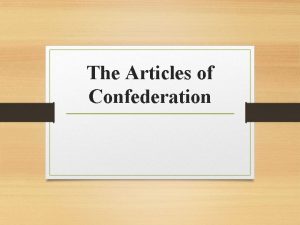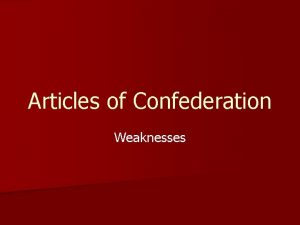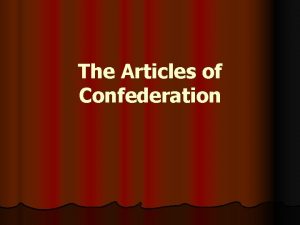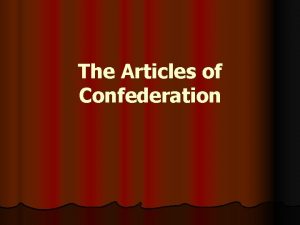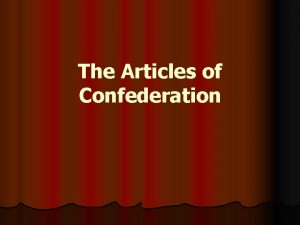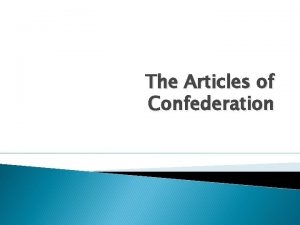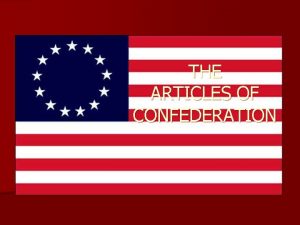ARTICLES OF CONFEDERATION 03011781 ARTICLES OF CONFEDERATION The














- Slides: 14

ARTICLES OF CONFEDERATION 03/01/1781

ARTICLES OF CONFEDERATION The Continental Congress wrote the Articles of Confederation during the Revolutionary War. The articles were written to give the colonies some sense of a unified government. Once thirteen colonies became thirteen states, however, each one began to act alone in its own best interest. A new governing document was needed in order for these new states to act together, to become a nation.

The Articles of Confederation became effective on March 1, 1781, after all thirteen states had ratified them. The Articles made the states and legislature supreme. There was no executive branch. Judicial functions were very limited. The resulting government was weak. Efforts to make it stronger failed. A convention called in May 1787 to re-write the Articles decided to draft an entirely new Constitution

STRENGTHS OF THE ARTICLES 1 To declare war and make peace. 2 To coin and borrow money 3 To trade with foreign countries and sign treaties 4 To operate post offices 5 Government signed a treaty of alliance with France in 1778. 6 Government successfully waged a war for independence against the British. Government negotiated an end to the American Revolution in the Treaty of Paris, signed in 1783. 7 Government granted the free inhabitants of each state “all the privileges and immunities of free citizens in the several states. ” 8 Government provided for the eventual admission of Canada into the Confederation. 9 Government passed the Northwest Ordinance of 1787, which allowed the Northwest Territories to organize their own governments. It allowed the eventual admission to the Union of no more than five states, and no fewer than three, “on an equal footing with the original states. ” The Ordinance also banned slavery from the region. 10 Government established the Departments of Foreign Affairs, War, Marine, and Treasury.


WEAKNESSES 1 Congress had no power to coin money, therefore each state developed its own currency. 2 Congress was unable to regulate interstate and foreign commerce; some states refused to pay for goods they purchased from abroad. 3 Congress was unable to impose taxes; it could only borrow money on credit. 4 No national court system was established to protect the rights of U. S. citizens. 5 No executive branch was established to enforce laws. 6 Amendments could be added only with the approval of all 13 states. 7 Approval of 9 of 13 states was required to pass a law in Congress. One vote was allotted for each state, despite the size of its population. 8 It was just a “firm league of friendship. ”

WEAKNESSES OF THE ARTICLES

“So long as any individual state has power to defeat the measures of the other twelve, our pretended union is but a name, and our confederation a cobweb”. Noah Webster, ca. 1780

MILITARY WEAKNESS

NO CONTROL OVER TRADE

NO PRESIDENT

TRADES WITH OTHER NATIONS BY EACH STATE

DRAMA BETWEEN STATES

TOOK 100% AGREEMENT TO MAKE LAWS
 Newburgh conspiracy apush
Newburgh conspiracy apush Articles of confederation acrostic
Articles of confederation acrostic Articles of confederation vs constitution
Articles of confederation vs constitution Articles of confederation fail
Articles of confederation fail Problems of articles of confederation
Problems of articles of confederation Articles of confederation vs constitution chart
Articles of confederation vs constitution chart Mnemonic for articles of confederation
Mnemonic for articles of confederation Articles of confederation apush
Articles of confederation apush Articles of confederation vs constitution
Articles of confederation vs constitution Problems with the articles of confederation
Problems with the articles of confederation Articles of confederation weaknesses
Articles of confederation weaknesses Articles of confederation
Articles of confederation Articles of confederation
Articles of confederation Wanted a just right government worksheet
Wanted a just right government worksheet Articles of confederation
Articles of confederation
